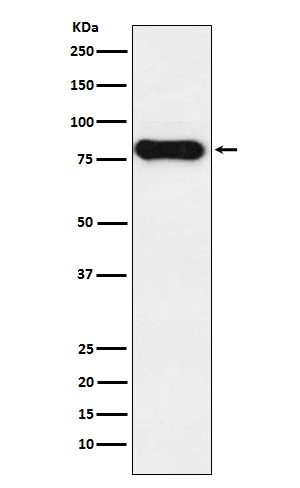
| WB | 1/1000-1/2000 | Human,Mouse,Rat |
| IF | 咨询技术 | Human,Mouse,Rat |
| IHC | 1/100-1/200 | Human,Mouse,Rat |
| ICC | 技术咨询 | Human,Mouse,Rat |
| FCM | 咨询技术 | Human,Mouse,Rat |
| Elisa | 咨询技术 | Human,Mouse,Rat |
| Aliases | IGHD; IgD; Immunoglobulin delta;;IGHD |
| WB Predicted band size | Calculated MW: 42 kDa ; Observed MW: 84 kDa |
| Host/Isotype | Rabbit IgG |
| Antibody Type | Primary antibody |
| Storage | Store at 4°C short term. Aliquot and store at -20°C long term. Avoid freeze/thaw cycles. |
| Species Reactivity | Human |
| Immunogen | A synthesized peptide derived from human IGHD |
| Formulation | Purified antibody in PBS with 0.05% sodium azide,0.05% BSA and 50% glycerol. |
+ +
以下是3篇与IGHD抗体相关的参考文献概览(注:IGHD通常指免疫球蛋白重链多样性基因片段,直接研究“IGHD抗体”的文献较少,以下文献聚焦其功能及机制):
---
1. **标题**:*Immunoglobulin heavy chain gene rearrangement and expression in human B cell development*
**作者**:Alt FW, Yancopoulos GD
**摘要**:经典研究阐述了B细胞发育中免疫球蛋白重链基因(包括IGHD片段)的重排机制,揭示了IGHD在抗体多样性生成中的关键作用,并解释了V(D)J重组过程中IGHD与IGHJ的随机组合原理。
---
2. **标题**:*Biased use of DH gene segments in human B-cell repertoires*
**作者**:Briney B, Burton DR
**摘要**:通过高通量测序分析人类B细胞抗体库,发现IGHD基因片段的长度和序列偏向性使用,这种偏向性影响抗体互补决定区(CDR3)的结构和抗原结合特性,为抗体工程提供参考。
---
3. **标题**:*Defects in the immunoglobulin heavy chain gene may lead to B cell dysfunction*
**作者**:Schroeder HW, Cavacini L
**摘要**:探讨IGHD基因突变或缺失导致的B细胞功能异常,如抗体亲和力降低或免疫缺陷疾病,强调IGHD在维持正常抗体应答中的重要性。
---
4. **标题**:*Structural basis of antibody diversity: lessons from the antibody light chain*
**作者**:Sela-Culang I, Alon S, Ofran Y
**摘要**:虽以轻链为主,但文中对比分析了重链IGHD片段对CDR3区域构象的贡献,指出IGHD的随机插入和体细胞超突变共同塑造抗体的多样性与特异性。
---
如需更具体的文献(如特定疾病或技术应用),建议补充关键词或限定研究领域。
Immunoglobulin D (IgD) is a unique antibody class primarily expressed on the surface of mature B cells alongside IgM, where it functions as part of the B cell receptor (BCR) complex. Discovered in 1965. IgD is characterized by a heavily glycosylated heavy chain (δ-chain) encoded by the *IGHD* gene. Unlike other antibodies, IgD exists predominantly in membrane-bound form, with only trace amounts secreted into serum, making its detection and study challenging. Its short serum half-life (~3 days) and low abundance have historically limited research, though advances in sensitive assays have expanded understanding.
IgD plays a critical role in B cell activation and immune regulation. It fine-tunes antigen recognition, enhances B cell survival, and promotes interactions with basophils and mast cells to modulate inflammatory responses. Emerging evidence links IgD to mucosal immunity, particularly in the respiratory and gastrointestinal tracts, where it may participate in microbial defense. Autoantibodies targeting IgD (anti-IgD antibodies) are rare but implicated in autoimmune disorders like lupus and certain B cell malignancies. Conversely, therapeutic anti-IgD antibodies are being explored to modulate aberrant B cell activity in autoimmune diseases. Despite its enigmatic nature, IgD remains a focus in immunology due to its dual roles in immune tolerance and pathogen response.
×